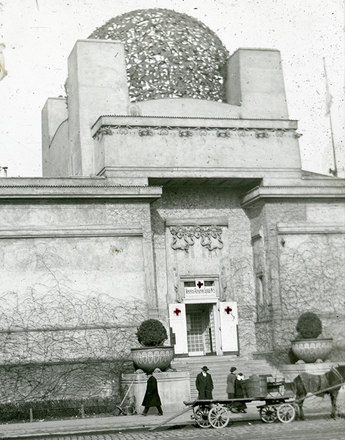Historical Rivals in Children’s Books
Good morning, Mr. Officer, / All four of us are here / Good, brave soldiers / And comrades without fear.
And so he turned to the blackboard, took a piece of chalk, and, pressing with all his might, wrote as large as he could: ‘VIVE LA FRANCE!’ (Alphonse Daudet, La dernière classe [The Final Class])
A literary mobilization amongst children and young people was already taking place in Germany and France before the First World War. However, the focus was different in the two countries. While Prussia could boast proud victories, with its triumph against Austria in 1866 and, above all, against France in the war of 1870/71, France was trying to come to terms with this very defeat.
On the whole, soldiering was accorded a high status in German children’s literature. In the Wilhelmine empire, military education was an integral part of the life of male offspring, and enlisting in the Kaiser’s army was seen as a worthy goal.
Friedrich Wilhelm Güll wrote Der kleine Rekrut [The Little Recruit], which was recommended as a song for use in schools until 1919 and was a firm favourite in picture books and school books:
If you want to be a soldier
Just get your rifle out,
Load it up with powder
And a bullet up the spout.
Young lad, if you join the fight,
Learn this song with all your might,
Little horsey, giddy-up, giddy-up
With a trot and a hop, hop, hop!’
The picture books Die Wacht am Rhein [The Watch on the Rhine] (1910) or Zehn Jahre deutsche Not, Vaterländische Bilderbücher [Ten Years of German Hardship: Picture Books of the Fatherland] (1912) take up themes from the Napoleonic Wars and show through examples where the military force should be directed: that is, against France.
Francophone children’s literature was also arming itself verbally, if on a smaller scale. French children’s and teenagers’ literature as a genre was at that time less important and less widespread than in German-speaking countries, where children’s literature was seen as an important means of socialization and was often produced by members of the teaching profession or the army.
In France, the task of writing books for children and teenagers was left to ‘professional’ writers. Nonetheless, their works were often aimed at both a young and an adult audience. Examples of this are Alphonse Daudet’s Les Contes du Lundi [The Monday Tales] (1873), which became ubiquitous in school libraries. Daudet, who had himself served in the Garde Mobile during the Franco-Prussian war of 1870/71, enumerates the national virtues: above all, love of the Fatherland, the French language, and the flag, which, carried in the hearts of soldiers, represented invincible France. The best known of the Tales is La dernière classe [The Final Class], where Daudet laments the loss of Alsace-Lorraine, personified in the ageing village teacher, and portrays the non-violent resistance of the villagers against the Prussian occupiers. This resistance becomes rather less non-violent in Le Prussien de Bélisaire [The Prussian of Bélisaire], which sees a carpenter beating a Prussian to death in his cellar. Daudet’s tales as a whole stand for resistance against Prussia, and later, Germany – a theme of French literature that to this day plays a major role in moulding the perceptions of the country’s Western neighbour.
Translation: Aimee Linekar
Christadler, Marieluise: Kriegserziehung im Jugendbuch. Literarische Mobilmachung in Deutschland und Frankreich vor 1914, Frankfurt am Main 1978
Daudet, Alphonse: Contes du Lundi. Unter: http://www.inlibroveritas.net/lire/oeuvre2311.html (19.06.2014)
Kotzde, Wilhelm (Hrsg.): Die Wacht am Rhein – Soldatenbilderbuch von Angelo Jank. Gedichte ausgewählt von Nikolaus Henningsen, Mainz 1910
Lukasch, Peter: Der muss haben ein Gewehr: Krieg, Militarismus und patriotische Erziehung in Kindermedien vom 18. Jhdt. bis in die Gegenwart, Norderstedt 2012
Quotes:
„If you want to be ...": Unter: http://www.volksliederarchiv.de/text1395.html (19.6.2014) (Translation)





